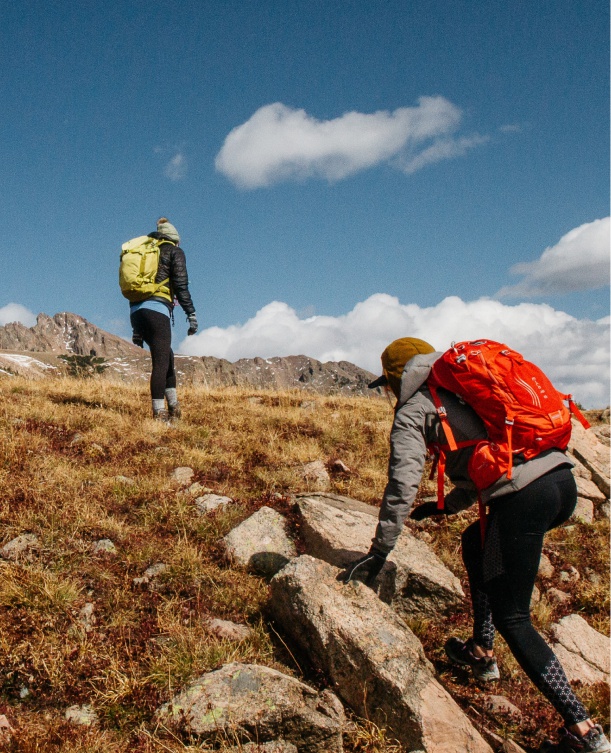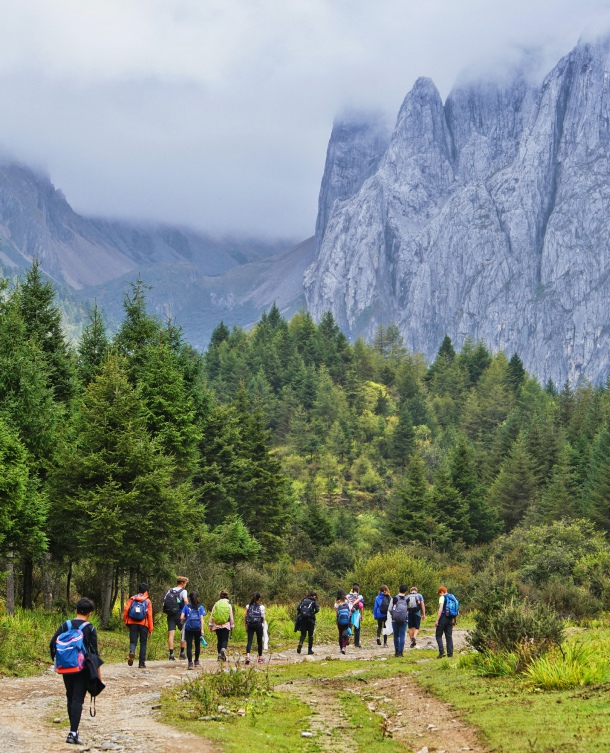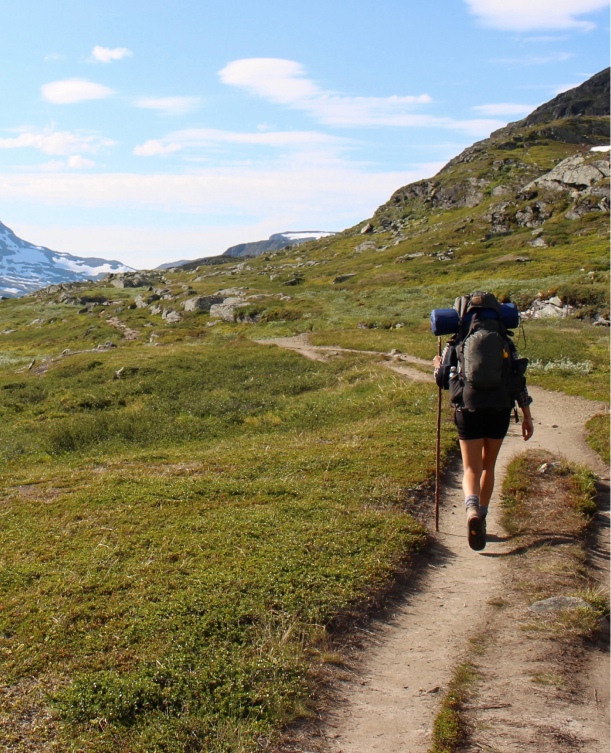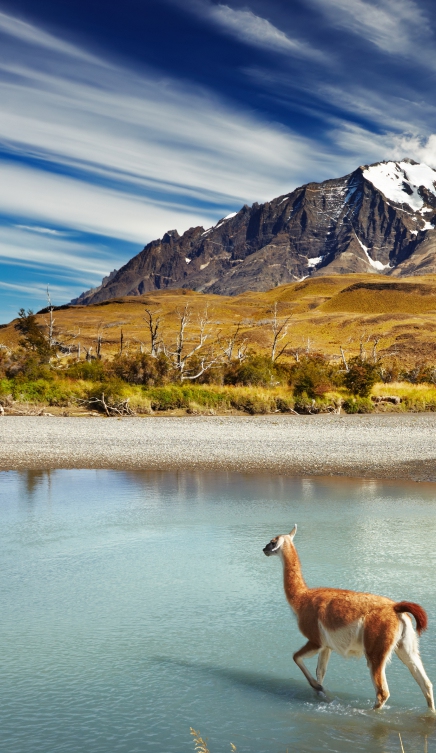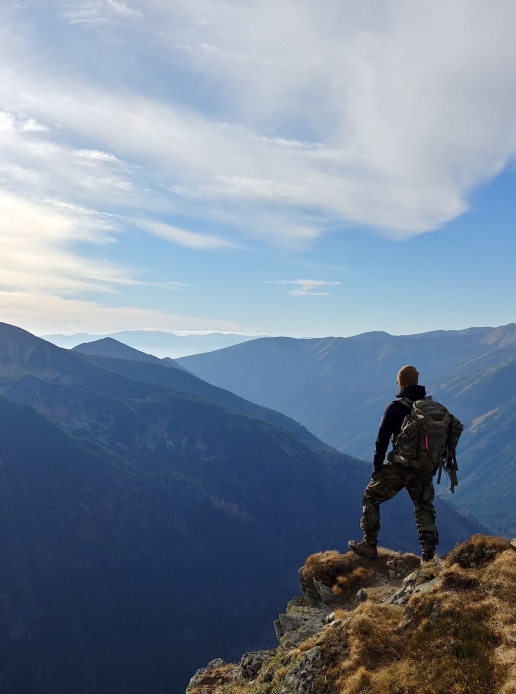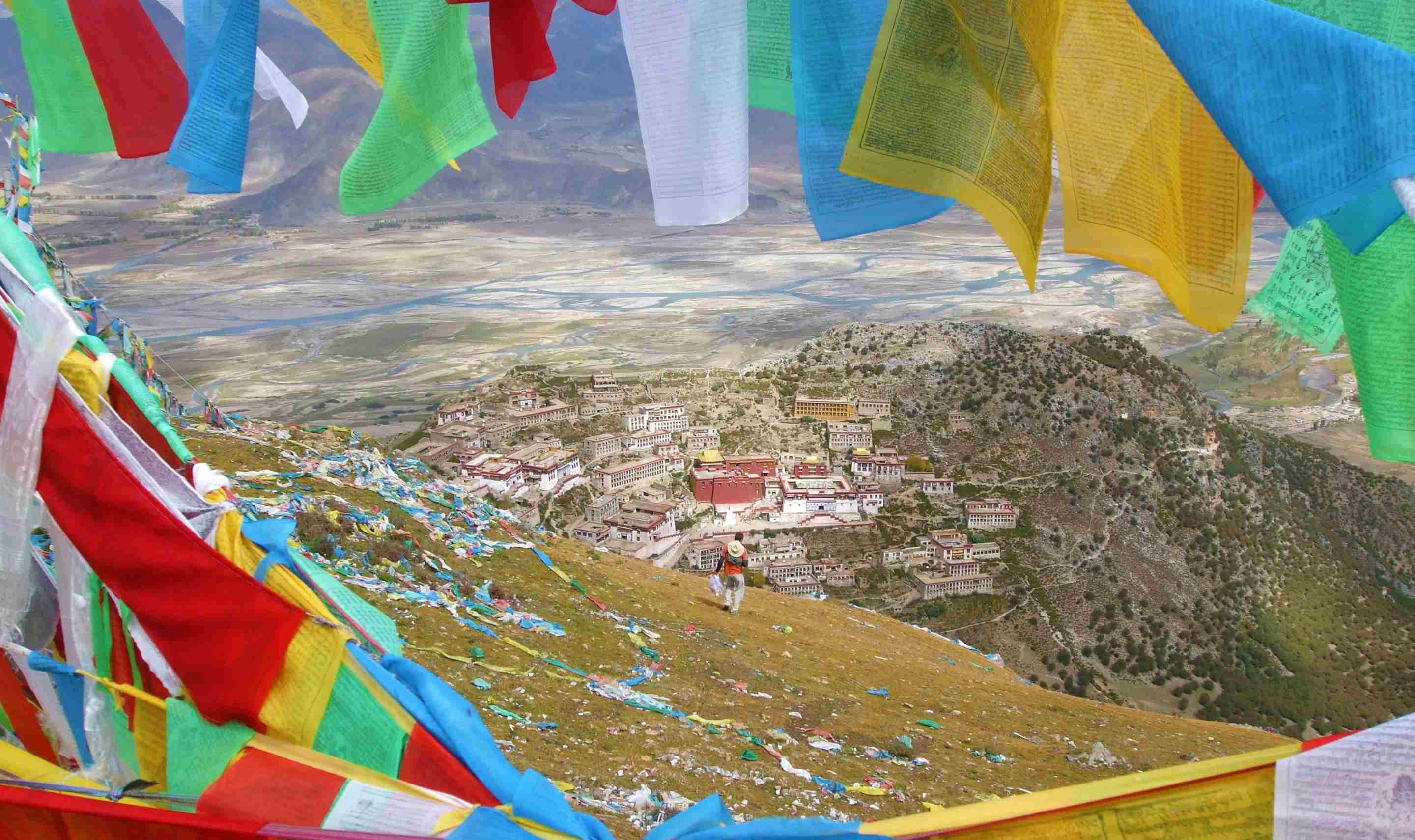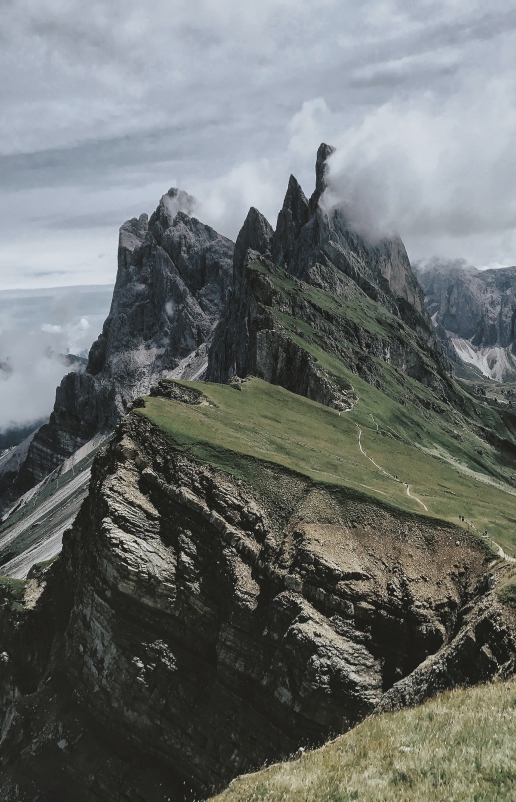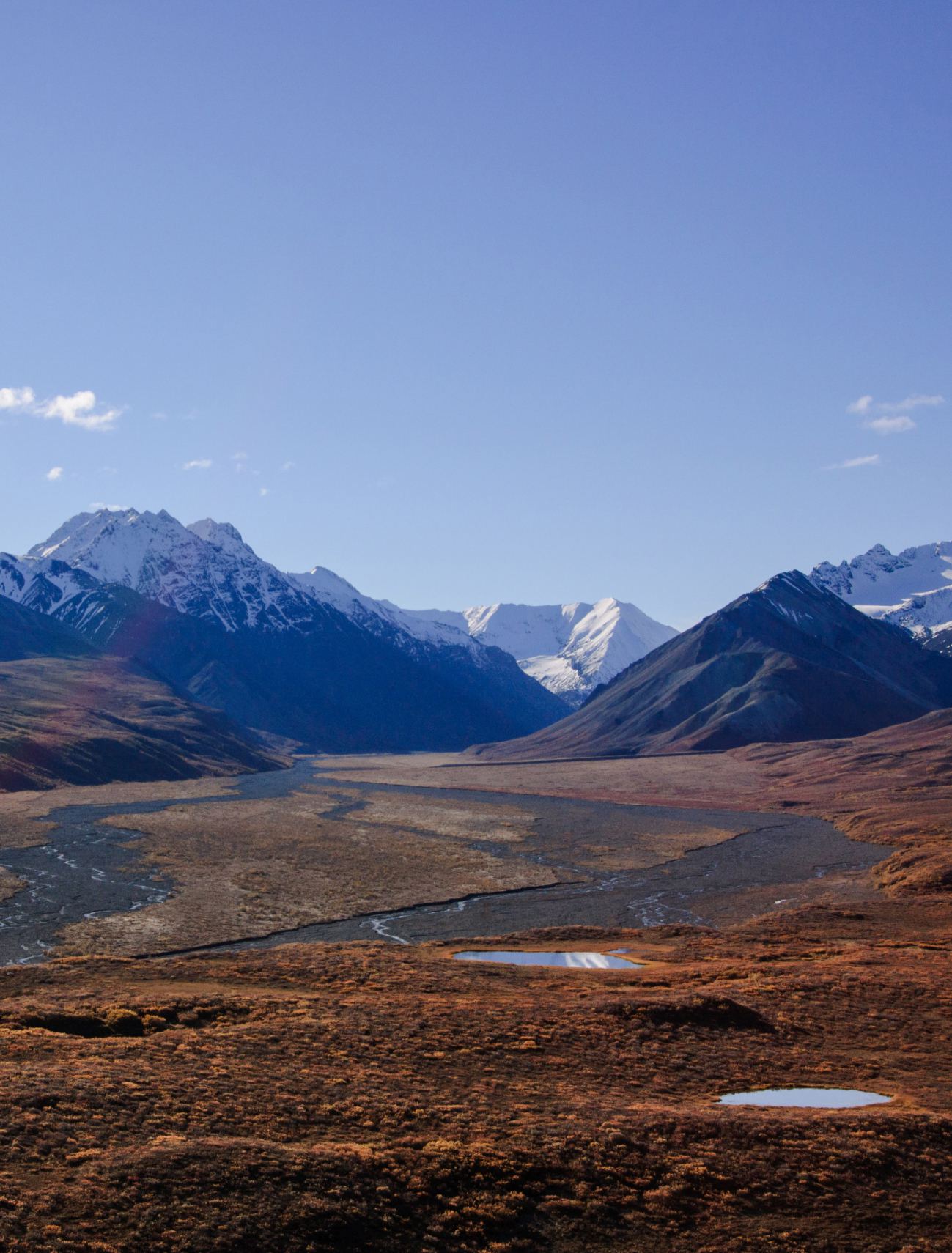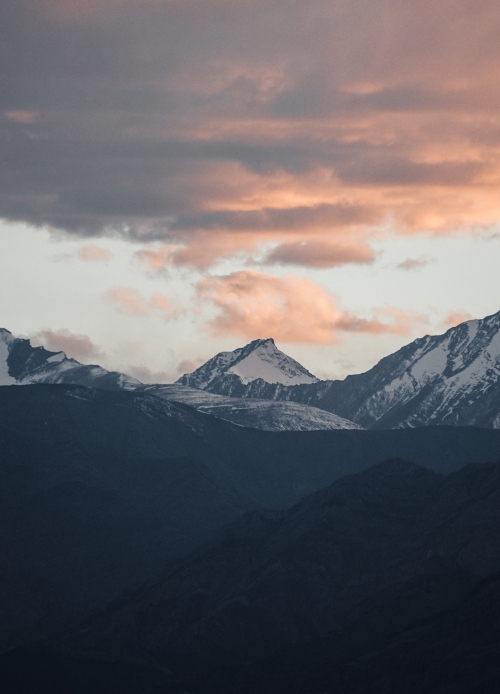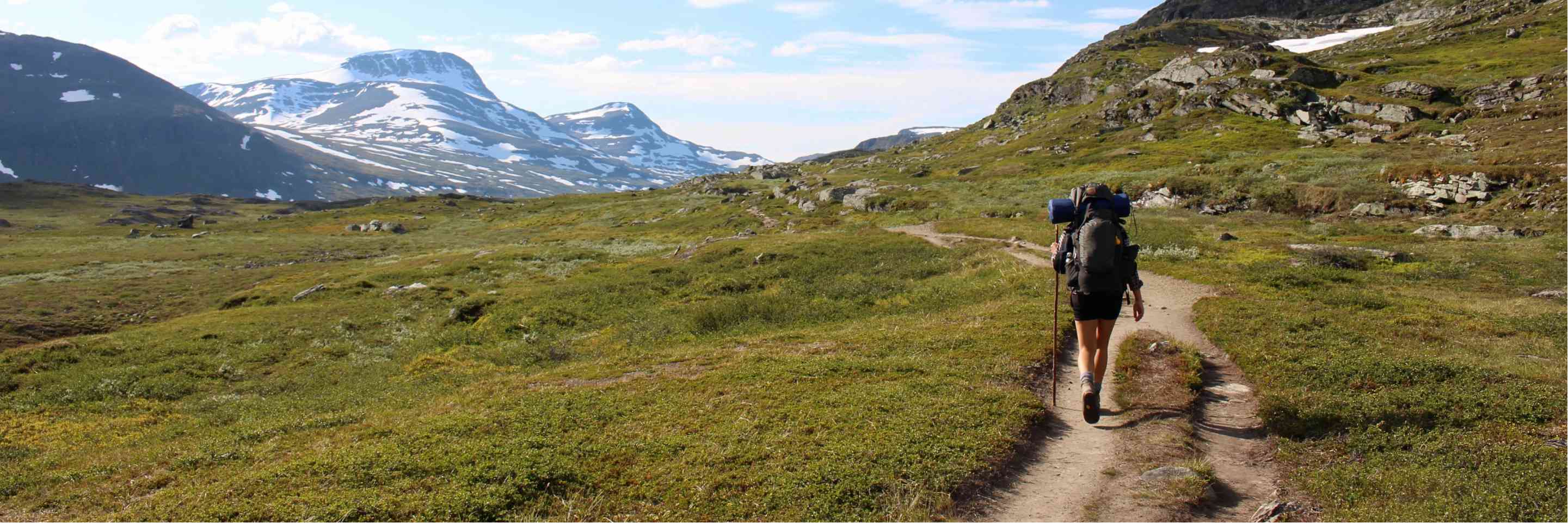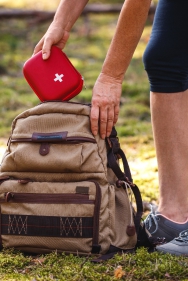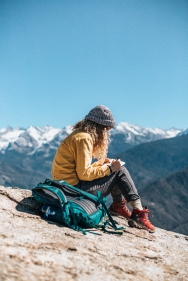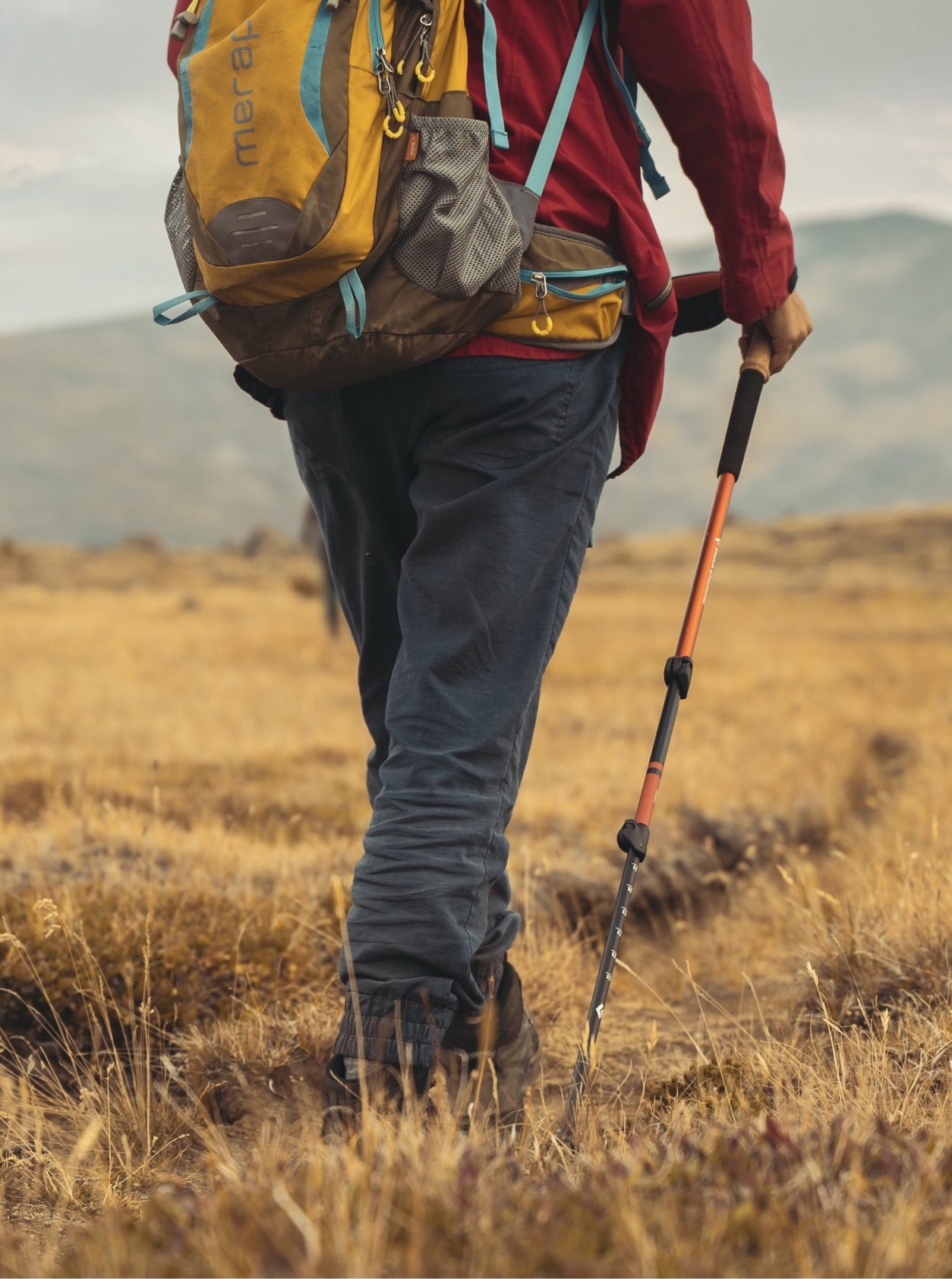
Trekking and hiking holidays offer so much. Not only are you able to explore some of the world's most breathtaking landscapes, but being immersed in the beauty of nature can be great for calming the mind and nourishing the soul.
What’s more, trekking and hiking have plenty of physical benefits too – helping to develop leg and abdominal muscles, strengthening the density of your bones through high-impact training, and burning off extra calories with every step. In this guide, we look at some of the world’s best hiking routes, focusing on longer treks which take a day or more to complete.
We’ll provide details on what you can expect to see on your journey, practical and safety tips for hiking, a rough idea of what to pack, and details on being a responsible visitor as you tackle some of the most awe-inspiring routes known to man
To walk in nature is to witness a thousand miracles
Mary Davis
Contents
Chapter 1
Trekking and hiking holiday statistics

The adventure tourism sector is currently one of the fastest growing in the world. In 2021 alone, as much as $282bn was generated on a worldwide basis. With a compound annual rate of growth of 15%, the industry is expected to reach as high as $1 trillion by 2030.
Of this total number, as much as 60% are “soft adventure activities”. This is the term given to less high-octane outdoor pursuits, such as backpacking, camping, and hiking. In the US alone, hiking ranked as the second most popular form of adventure activity, with 18% of those on this kind of getaway choosing to trek or hike as part of their vacation.
It wasn’t just in the US where hiking proved popular, though. Continents all across the world cite this form of adventure tourism as one of their favourites:
In 2021, the adventure tourism sector generated $282bn on a worldwide basis.
NORTH AMERICA
3rd
behind cycling and wildlife viewing
SOUTH AMERICA
1st
ahead of cuisine tasting and cycling
EUROPE
3rd
behind cycling and culinary holidays
ASIA
2nd
behind cultural exploration, but ahead of cycling
Despite Europeans themselves only ranking hiking as the third most popular adventure tourist activity, it’s in Europe where this kind of holiday generates the most revenue for the sector. The UK alone accounts for 19% of the world’s adventure travel tourists, while in Germany, as many as 17 million people went on a walking holiday the year before the pandemic.
When it came to a breakdown of what the hiking scene looks like, one survey found the average hiker was 37, with 55% being men, 42.5% female, and 2.25% non-binary. The youngest hiker surveyed was just 17, while the oldest was 71.
Perhaps most interestingly, the survey would highlight a significant disparity between the education levels of those taking part – with a huge percentage of respondents having attended some level of higher education during their academic careers:
Bachelor’s degree
49%
(of respondents)
Graduate/professional degree
29%
Some college
10%
Highschool diploma/GED
6%
Associate’s degree
5%
Ultimately though, it seems as if the pandemic is at least partially responsible for a surge in popularity when it comes to hiking and other outdoor pursuits. A 2022 study found that 58% of holidaymakers are more interested in exploring the outdoors than they were in years past, while 61% also wanted to try wellness and relaxation experiences.
Chapter 2
The 20 best routes in the world for hiking and trekking
There are hundreds of potential hiking routes out there for would-be adventurers to try. But picking which of these utterly unique, and naturally breathtaking treks is right for you is no easy feat. We’re here to provide some inspiration.
In no particular order, here are 20 of the best routes from all across the globe.
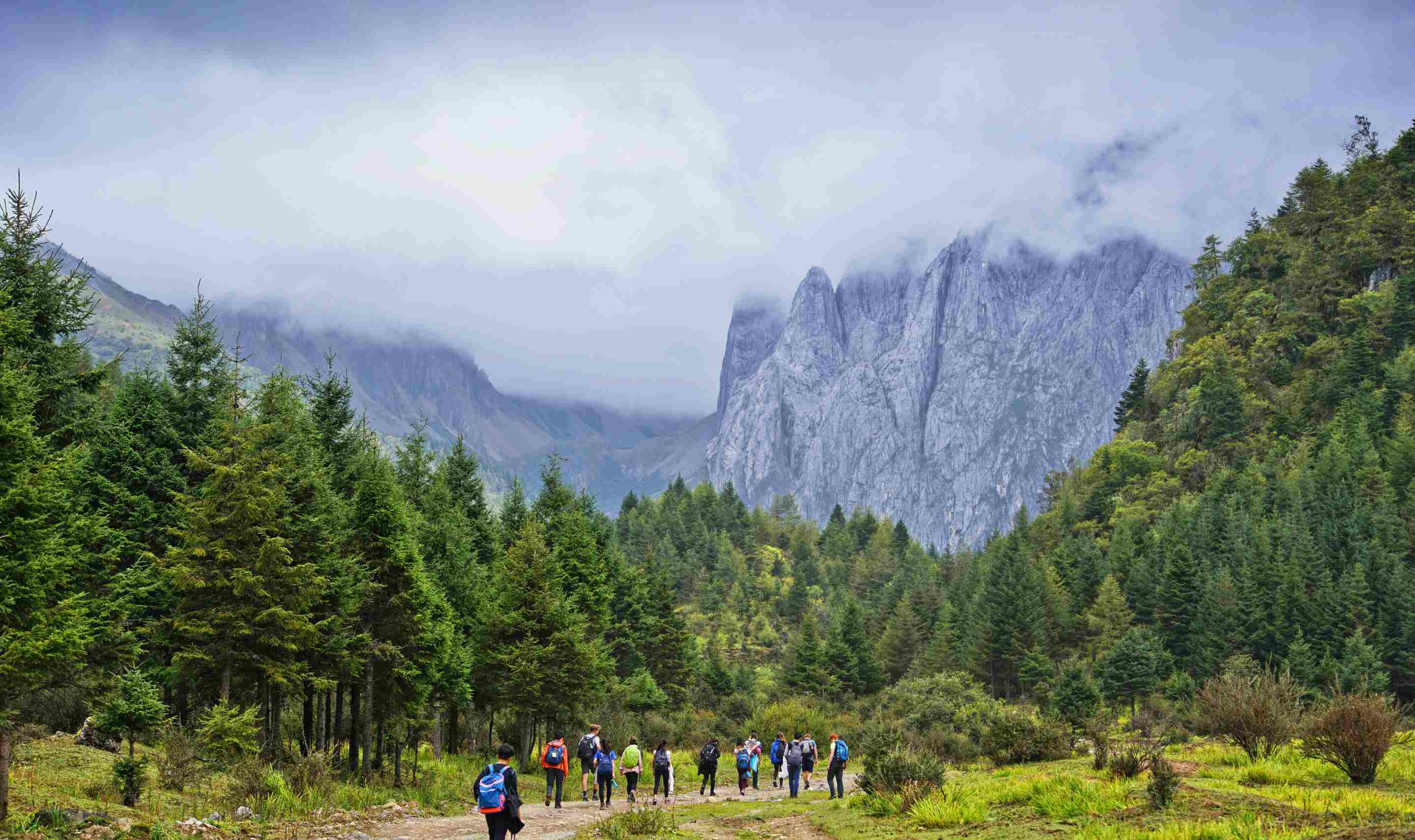
1 of 20
Routeburn Track
Known the world over for the immense natural beauty it possesses, it’s hardly a surprise that a trail across New Zealand makes our list. The Routeburn Track offers explorers the chance to immerse themselves in a landscape which is unparalleled by anything else on Earth.
The highlight of the journey undoubtedly comes in the form of two national parks – Fiordland and Mt. Aspiring. Each area of beauty offers hikers the chance to walk through glacier-carved fjords, lush green valleys, giant vistas which open up to brilliant blue skies.
The most popular route to take is the Routeburn Shelter, which has several overnight stops in well-equipped campgrounds. If you do want to follow this particular trail, make sure to book a spot well ahead of time. It’s popular, and with efforts to conserve the area, party numbers are limited.
Highlights
Location:
South Island, New Zealand
Distance:
32km (20mi)
Time:
3-4 days
Difficulty:
Moderate
Unique feature:
Fiordland and Mt. Aspiring
Best time to hike:
September to November
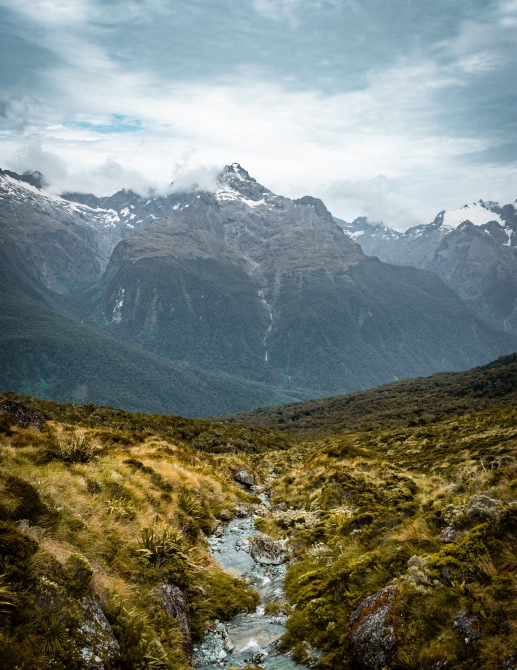
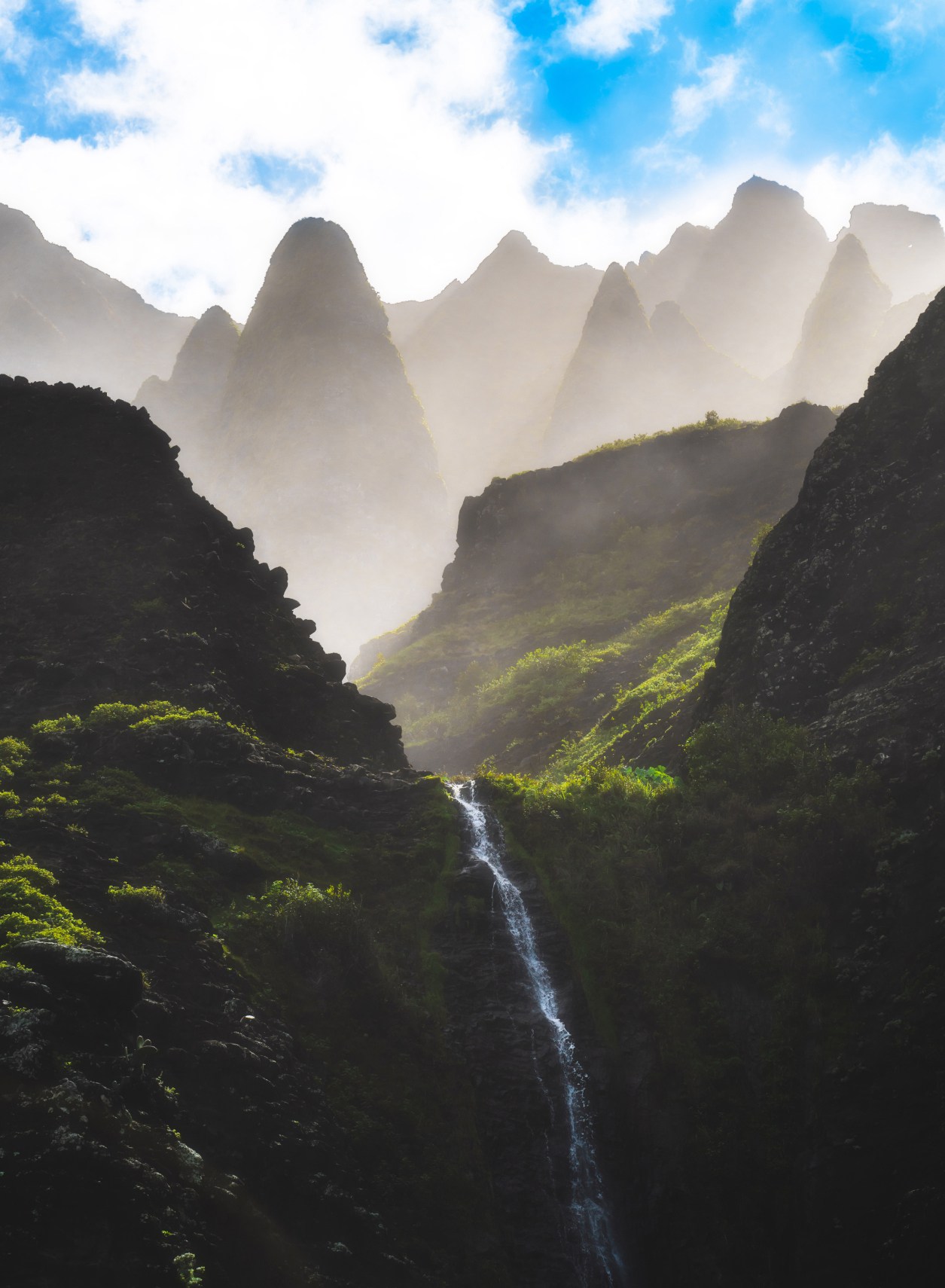
2 of 20
Kalalau Trail
When you think of historic US trails, it’s understandable if Hawaii doesn’t immediately spring to mind as a destination. The luxurious white sand of this tropical paradise are more closely associated with a restful, indulgent holiday, than an adventurous trek.
In reality, the Kalalau Trail offers one of the most unmatchable experiences in the world of hiking. With a route which sees explorers follow a towering cliff wall which is littered with local flowers and shrubbery which can’t be found anywhere else. You’ll even be able to stop off on a remote Hawaiian beach overnight.
The further you progress through this wonderful route, the less attached you’ll feel to reality – in the best way possible. The colours and sounds of the Nā Pali Coast, with its valleys, waterfalls, and beaches, are enough to transport you to another world.
Highlights
Location:
Hawaii
Distance:
18km (11mi) each way
Time:
2 days
Difficulty:
Easy
Unique feature:
Sea views and beach stops
Best time to hike:
Summer
3 of 20
Tour du Mont Blanc
Travellers from all across the world often cite the Tour du Mont Blanc as one of the best routes to take anywhere in Europe. That’s chiefly thanks to the fact that you’ll be able to dip your toes in three of the most exciting countries on the continent – France, Italy, and Switzerland.
Trekkers will find themselves travelling along the base of the world-famous Mont Blanc itself, with a path which sees them traverse alpine meadows and glacial valleys. Just be wary of how long the entire length of the trail can take. You’ll want to book out the best part of two weeks to be able to finish the route at a reasonable pace.
A unique aspect of this trail is the bevy of different national starting points you can choose between. Les Houches in the Chamonix valley, or Les Contamines in the Montjoie valley are ideal spots in France. In Italy, Courmayeur is the favourite of hikers. While in Switzerland, you again have the choice of two locales – Champex or Martigney.
Highlights
Location:
France, Italy, and Switzerland
Distance:
170km (110mi)
Time:
7-11 days
Difficulty:
Hard
Unique feature:
Alpine meadows
Best time to hike:
Summer
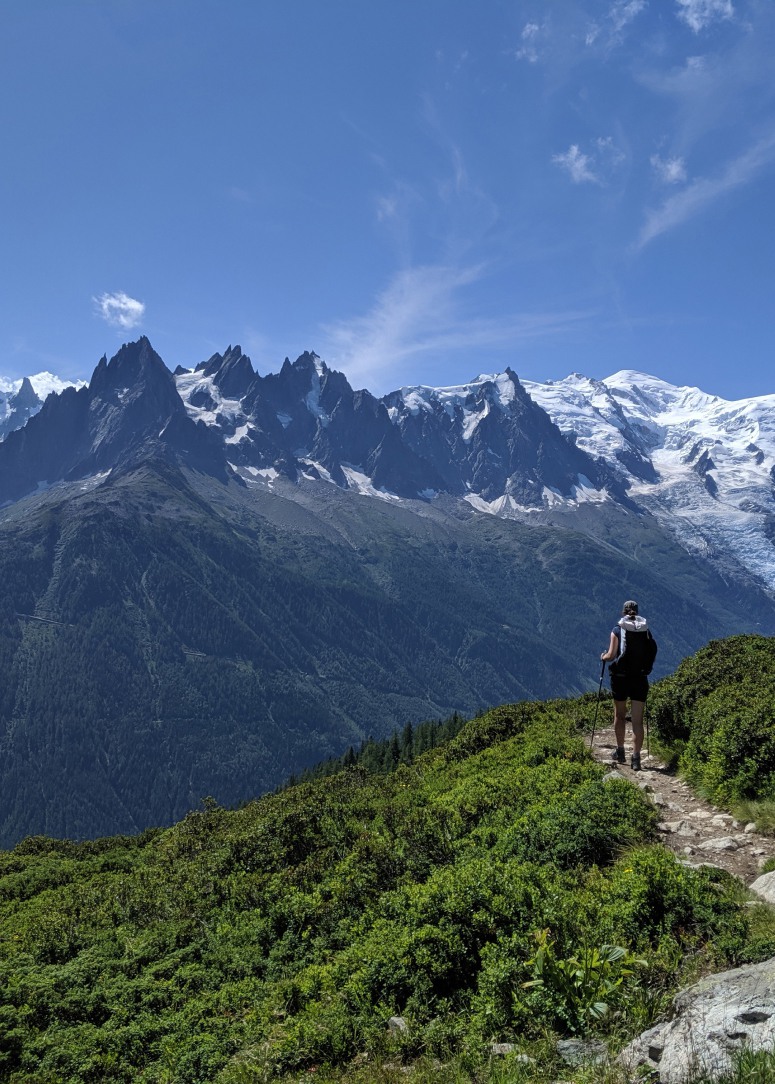
4 of 20
Kilimanjaro
Despite being one of the most famous landmarks in the hiking world, Mount Kilimanjaro is actually on the more steady side when it comes to the rate of ascension and effort required to scale it.
This is largely thanks to its popularity – with as many as seven different routes being carved out for hikers in order to provide a varying level of challenge, depending on abilities. Treks can last anywhere from five to nine days, but it’s recommended to opt for the latter in order to better pace yourself.
Most final stage hikes begin before dawn, and are perfectly timed so that you reach the summit of the mountain just as the first beams of morning light are bursting through the clouds.
For those who are less keen on trying to scale this behemoth, this walk around base camp – still in the wake of the majestic mountain – is a fantastic alternative. You’ll find wild elephants and lions stalking around the foot of the mountain (but these are kept in check by local rangers).
Highlights
Location:
Tanzania
Distance:
37-90 km (23-56 mi)
Time:
5-9 days
Difficulty:
Moderate
Unique feature:
Mount Kilimanjaro
Best time to hike:
Dry months (December to March, and June to October)

5 of 20
La Ciudad Perdida
Often viewed as one of the most overlooked wonders of the ancient world, Ciudad Perdida, or “the Lost City”, was first discovered by explorers in 1972. Believed to outdate Machu Picchu by as much as 650 years, this Colombian set of ruins was once home to thousands of inhabitants, before being mysteriously abandoned
Modern day adventurers can now embark on a three-to-four day hike, which sees them travel through a luscious green jungle, as they pass natural wonders like mountains, waterfalls, and rustic rock pools. What’s more, visitors can also expect to stumble across an ecosystem teeming with wild and exotic creatures. Colour butterflies, rare birds, and even different breeds of monkey can all be found en route to Ciudad
Their reward for their efforts is an archaeological site which is akin to no other. Left almost completely untouched for thousands of years, Ciudad Perdida has tiled roads leading up to it, engraved stone drawings, and, perhaps most fascinating but eerily of all, dedicated sacrificial sites.
Highlights
Location:
Sierra Nevada Mountains, Colombia
Distance:
50km (31mi)
Time:
3-4 days
Difficulty:
Moderate
Unique feature:
The Lost City and a jungle hike
Best time to hike:
June to August, and December to February
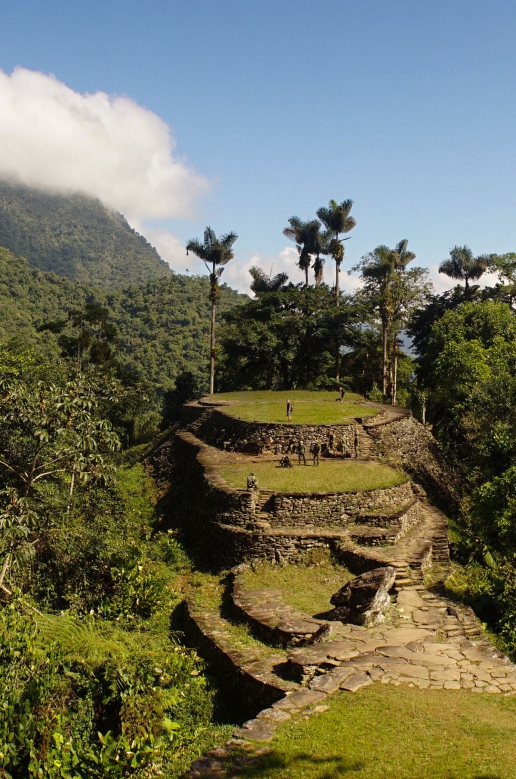
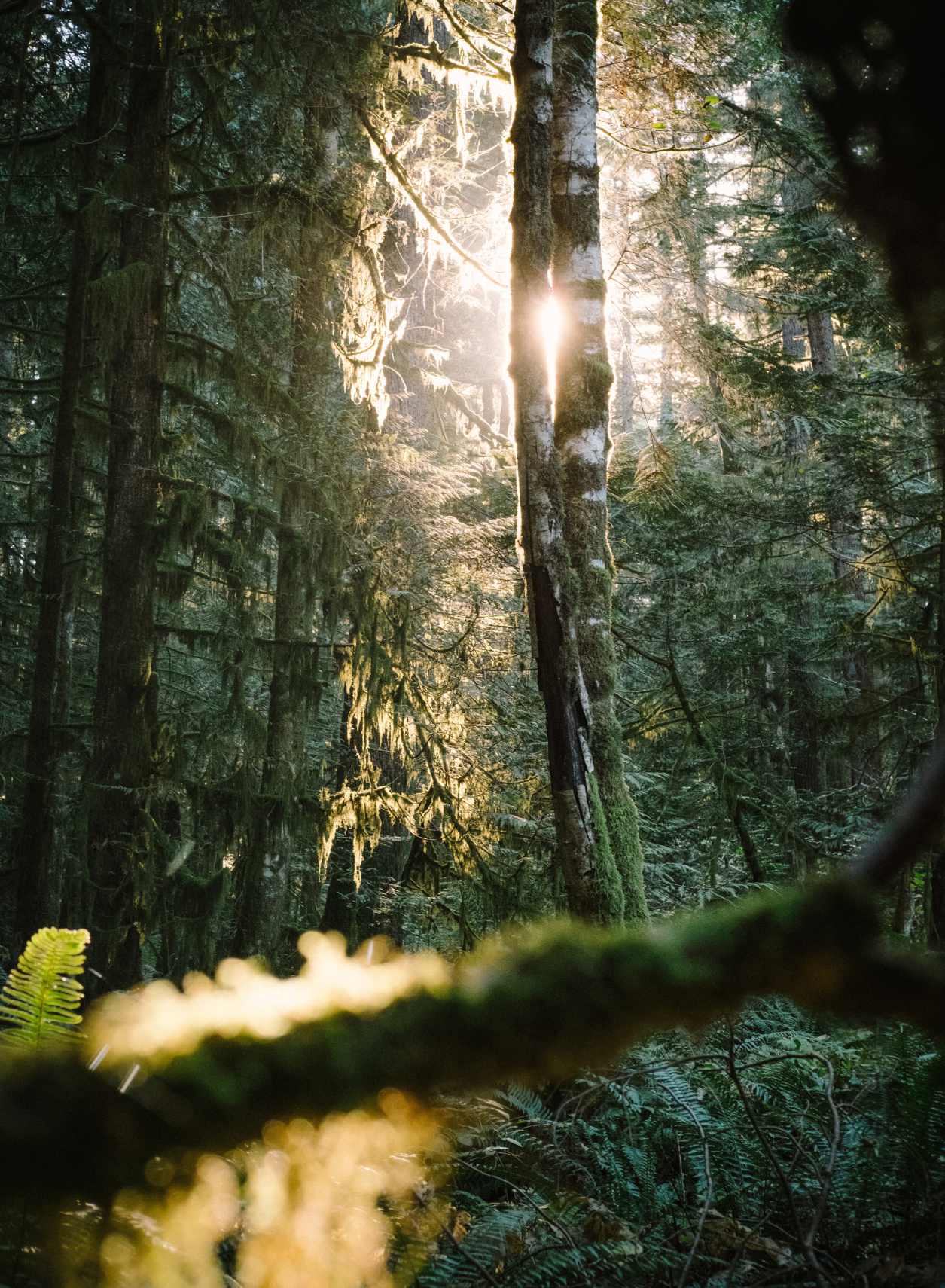
6 of 20
The West Coast Trail
Canada is another country famed for its variety of long-distance hiking routes. Standing out as arguably the best spot of all is the province of British Columbia. Its temperate rainforests are seen as one of the best blends of beauty and ideal walking conditions, with Vancouver Island being the creme de la creme.
A rugged coastline, coupled with waterfalls and lush areas of rainforest, make this the most popular spot for those looking to pursue a walking holiday. Arguably the best route is the West Coast Trail, which blends that stunning natural beauty with the history of the First Nations. Hikers are able to follow the same paths which indigenous tribes like the Pacheedaht, Ditidaht, and Huu-ay-aht once trod.
Along the trail, hikers will encounter an abundance of wildlife. Orcas, great whales and sea lions in the water, while puffins, cormorants and even eagles are visible along the route. The trail can be tackled from north-to-south, or south-to-north, so be sure to start your adventure on the side closest to where you’re staying.
Highlights
Location:
Vancouver Island, Canada
Distance:
75km (46mi)
Time:
5-8 days
Difficulty:
Challenging
Unique feature:
First Nations influence & history
Best time to hike:
July and August
7 of 20
The Torres del Paine Circuit
Patagonia is another region which is known the world-over for the diverse and challenging treks it offers to hikers. Bordering Argentina and Chile, it’s proven a worthy location for adventure tourism for the best part of a century.
The Torres del Paine route is seen by many as the most aesthetically pleasing, with three giant granite peaks which are situated in the Chilean Cordillera Paine mountain range. You’ll encounter a myriad of wildlife on your trip, with the beautiful turquoise waters of the area perfectly contrasting the white, snowy peaks.
The most popular route on the trail is the “W” path, which takes experienced hikers about five days to finish. Be wary of the icy conditions here – which can be dangerous if you’re not wearing the right kind of footwear.
Highlights
Location:
Patagonia, Chile
Distance:
136km (85mi)
Time:
9 days
Difficulty:
Difficult
Unique feature:
Unique wildlife
Best time to hike:
September to November, and March to May
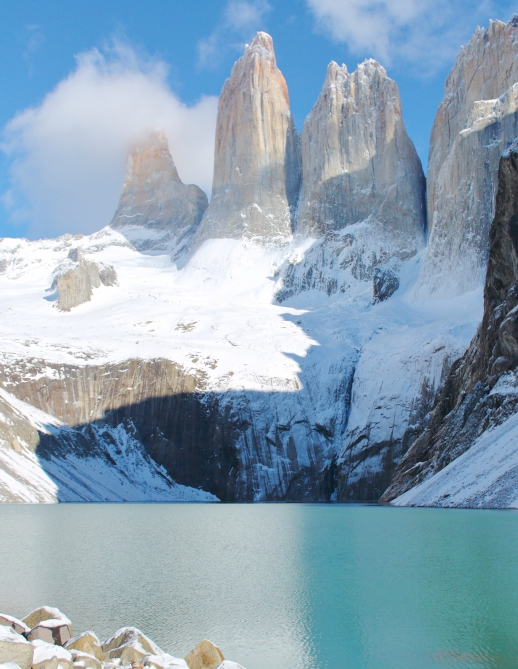
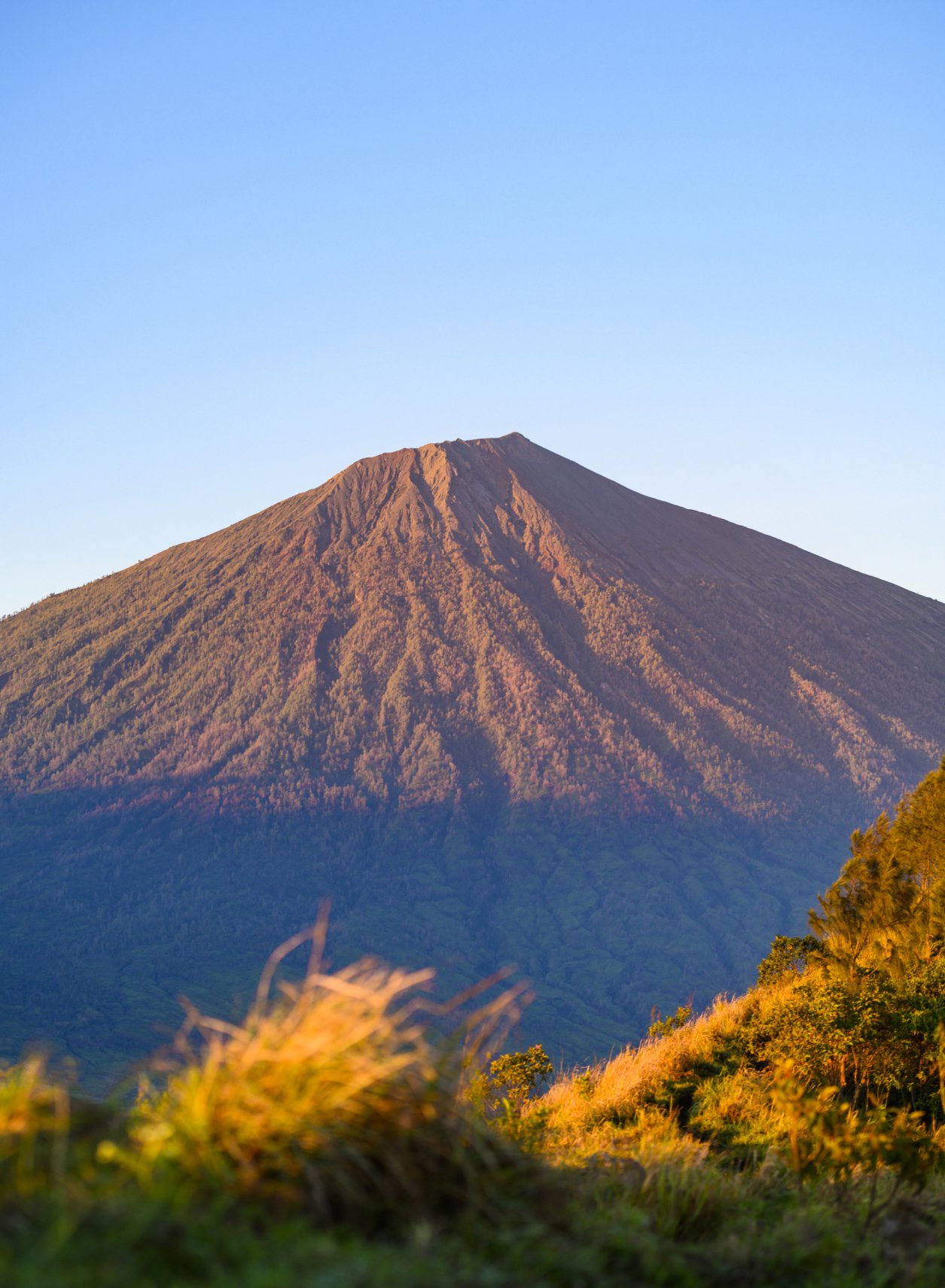
8 of 20
Gunung Rinjani
While one of the shorter hikes on this list, the ascent of Gunung Rinjani still offers enough to provide a healthy test for adventurers. Situated in Indonesia, this picturesque locale sees hikers travel up a 12,224 feet lake-capped volcano – which offers stunning views of the landscape below for anyone who reaches the summit.
The final trek will usually start in the dark, as it allows you to reach the volcano’s peak just as dawn breaks through. The effect is an atmosphere which borders on the prehistoric, and something which can’t be experienced anywhere else in the world.
Just be wary that the volcano itself is not dormant, with notable volcanic activity occurring there in 2016. Nobody ever said climbing a volcano would be easy.
Highlights
Location:
Indonesia
Distance:
24km (15mi)
Time:
2 days
Difficulty:
Moderate
Unique feature:
A volcano
Best time to hike:
April to December
9 of 20
Laugavegur-Fimmvörðuháls
While a relatively new name in the world of hiking, the Laugavegur-Fimmvörðuháls trails have quickly risen to prominence amongst experienced and beginner hikers alike. That’s thanks in no short part to the completely unique landscape that these Icelandic routes offer.
As you weave through bubbling hot springs, it’s hard not to be struck by the austere beauty of the rhyolite mountains, which serve as the perfect foil to a bevy of black lava fields. But this is just the first half of the trail.
Once you’re on the other side of this other-worldly path, you’ll be met with vibrant green valleys, which are juxtaposed by three giant glaciers. There really is nothing like this route anywhere else in the world.
Highlights
Location:
Iceland
Distance:
80km (50mi)
Time:
6-8 days
Difficulty:
Challenging
Unique feature:
Black lava fields
Best time to hike:
June to September
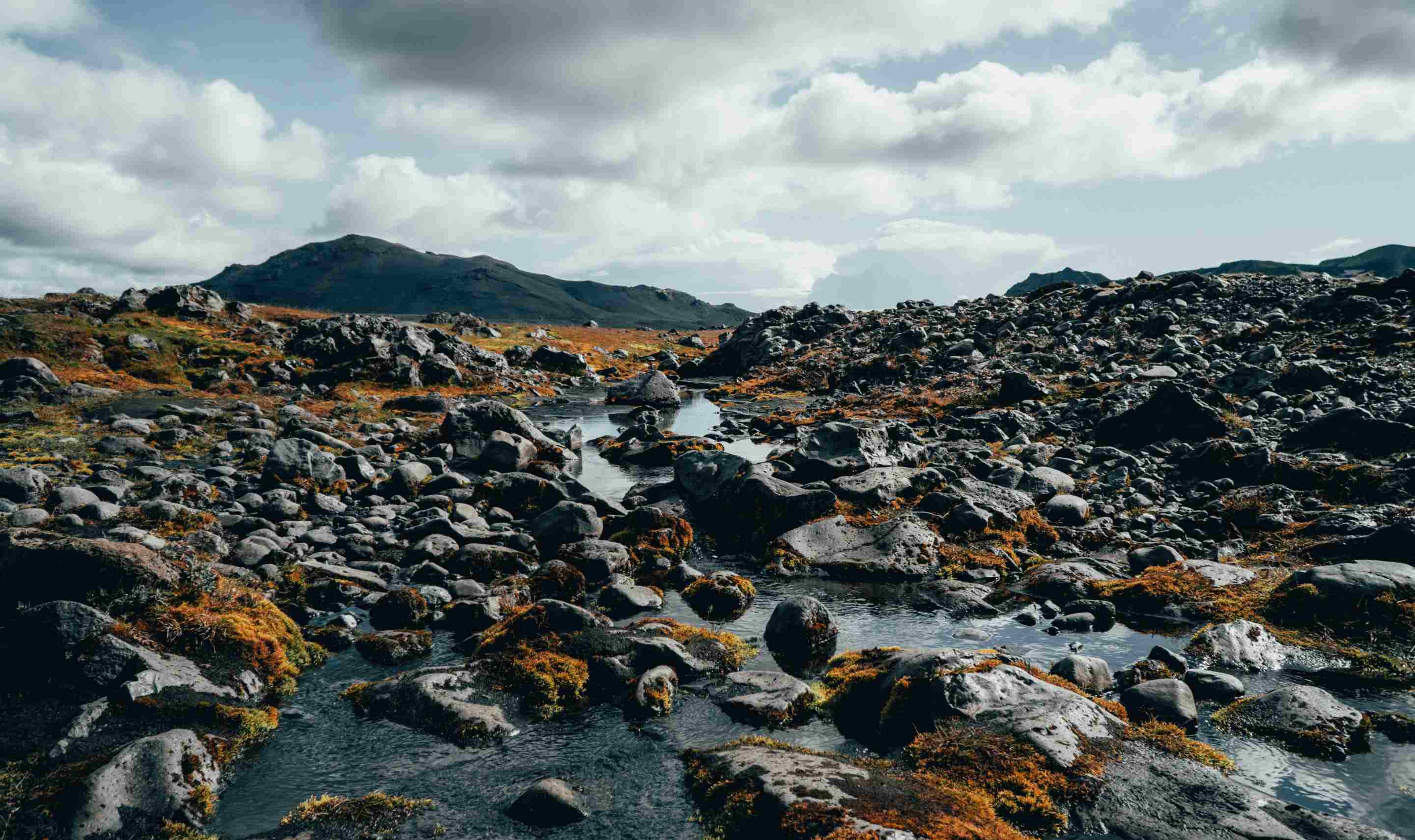
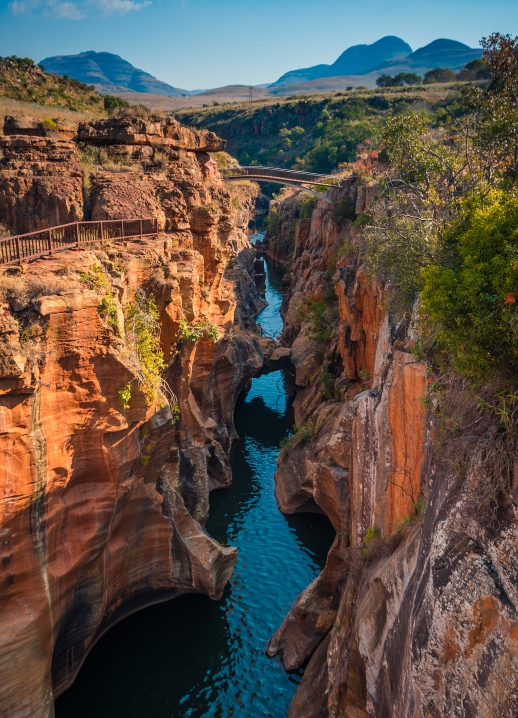
10 of 20
The Blyde River Canyon
While perhaps not as famous as its cousin in Arizona, the Blyde River Canyon is the third biggest – and greenest – in the world. Hikers can travel through the canyon across a series of days, with the pinnacle of the trip culminating as you reach the aptly named “God’s Window”.
Along the way, hikers will encounter an abundance of wildlife, including baboons, bushbuck, and a wide variety of bird species, as well as the spectacular Blyde River Dam, one of the largest dams in South Africa. The trail also offers breathtaking views of the Three Rondavels, a trio of peaks that resemble traditional African huts, and the Bourke's Luck Potholes, a series of deep and narrow rock pools carved into the canyon walls by rushing water.
This viewpoint offers a panoramic 360-view of the entire canyon, in all its lush greenness. It not only provides an image which you’ll be hard pushed to find anywhere else, but also puts into perspective just how hard you’ve worked to reach this point.
Highlights
Location:
Mpumalanga Province, South Africa
Distance:
60km (37mi)
Time:
4-5 days
Difficulty:
Moderate
Unique feature:
The canyon
Best time to hike:
March to November
11 of 20
Everest Base Camp
While scaling Mount Everest itself is probably a little out of the question for most amateur hikers, the same can’t be said of its increasingly popular base camp trek. Providing all the visual magic of Everest itself, those who tackle this route will pass along four of the highest peaks in the world.
Everest (29,028 feet), Lhotse (27,939 feet), Makalu (27,788 feet), and Cho Oyu (26,315 feet) can all be found along the route, which starts in the peaceful Lukla Town, and cuts through several Sherpa villages as you travel.
A cultural highlight of the trip is a visit to the Tengboche Monastery, where hikers can enjoy a variety of religious ceremonies, as well as musical and dance performances from Sherpas. This holy place also serves as a welcome respite on your slog across Base Camp.
The beauty of this particular hike is that it gives travellers a taste of the world’s most famous mountain, without the risks of trying to scale it.
Highlights
Location:
Nepal
Distance:
130km (80.7mi)
Time:
12-14 days
Difficulty:
Moderate
Unique feature:
Mount Everest
Best time to hike:
October to April
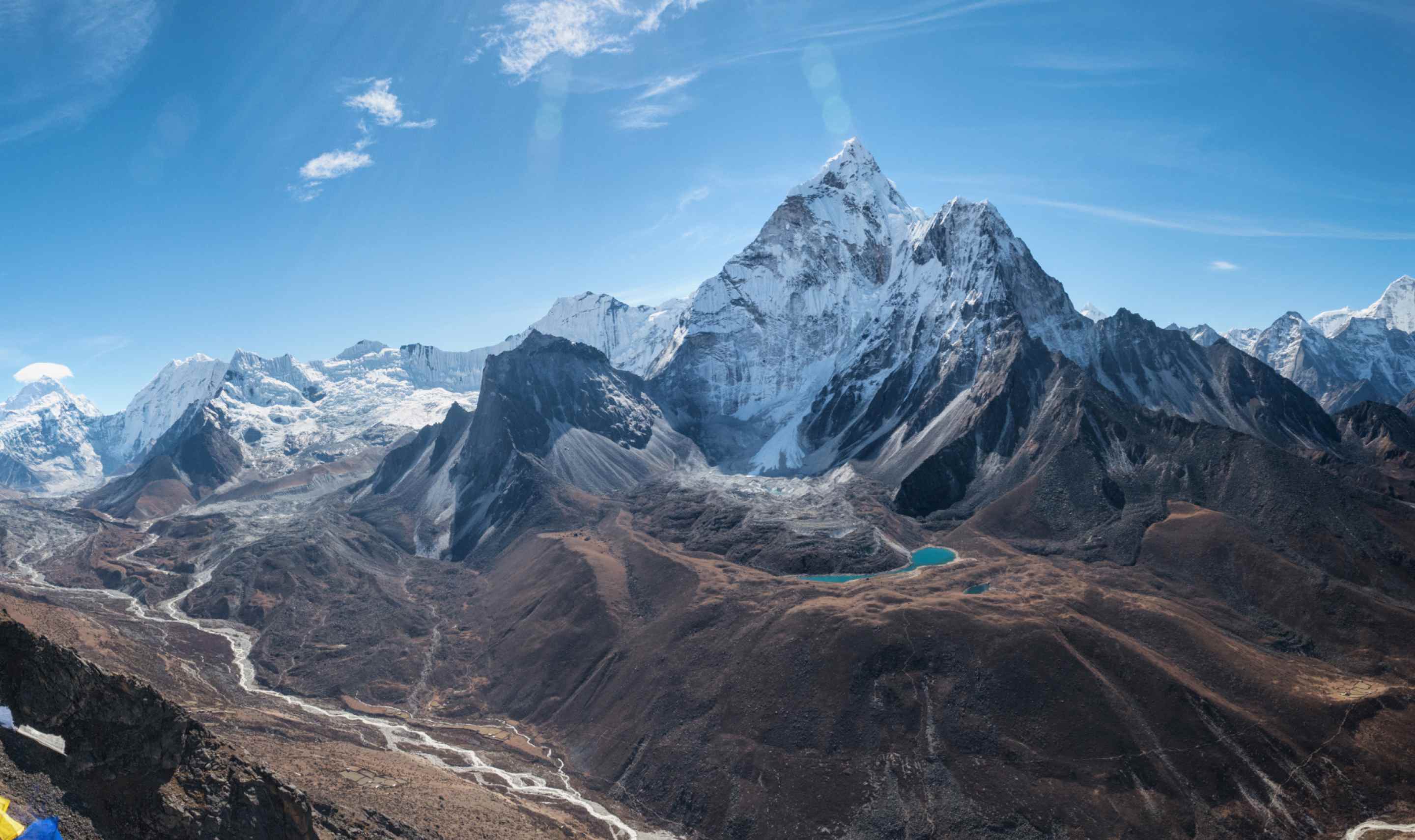
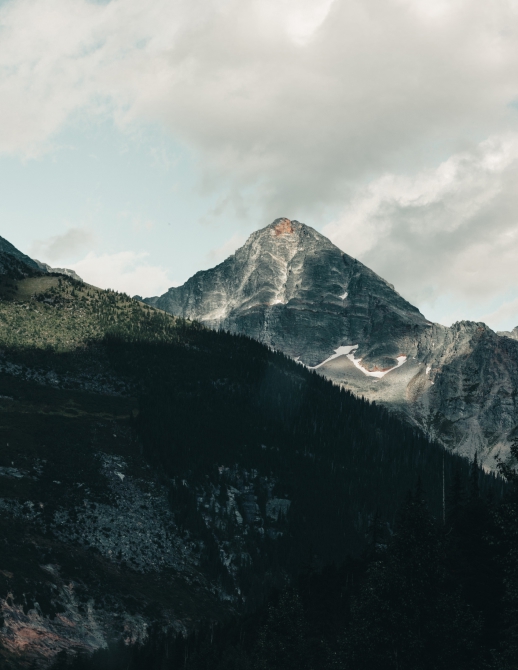
12 of 20
Banff Highline Traverse
The Canadian Rockies are another must-see for anyone with a penchant for adventure tourism. Fans of this mountain range cite the blend of icy glaciers and green forests as their primary appeal. This makes them the perfect challenge for hikers who have an above average level of experience under their belts.
Of all the trails to try out, the Banff Highline Traverse probably does the best job at encapsulating everything that people love about the Rockies. Starting off next to the turquoise Vista Lake, you’ll climb up the Arnica Ridge, until you eventually reach the peak of Mount Assiniboine.
Just be sure to educate yourself on the local wildlife before you go. Canada is famous for its critters, with elk, moose, deer, grizzly bears, and black bears all calling this area home.
Highlights
Location:
Alberta, Canada
Distance:
103km (64mi)
Time:
7-9 days
Difficulty:
Hard
Unique feature:
The Canadian Rockies
Best time to hike:
July to September
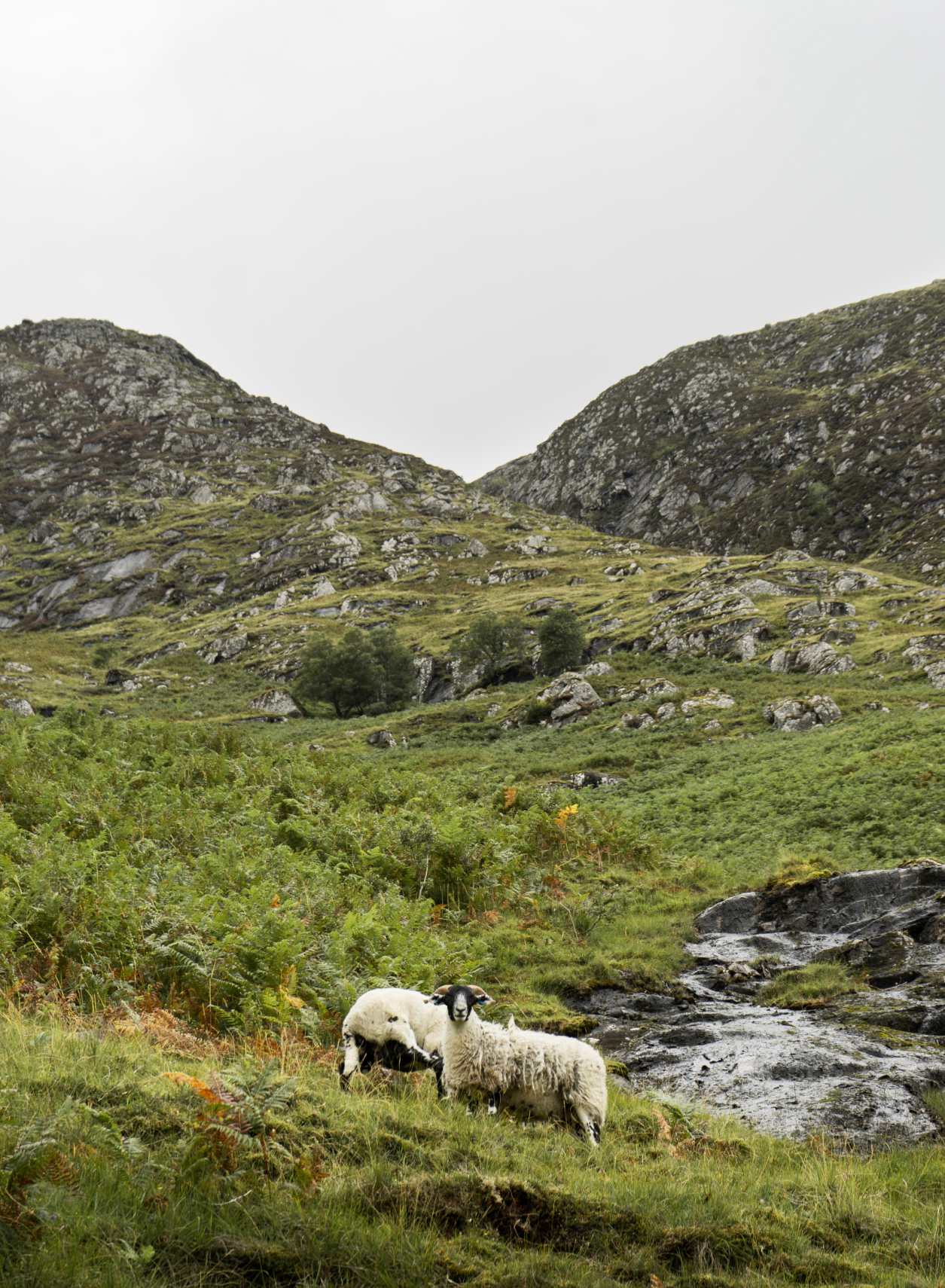
13 of 20
The West Highland Way
We’d be remiss to talk about some of the best hiking routes across the globe without giving a nod to one of the most scenic and picturesque destinations in the world – the Scottish Highlands. Specifically, the West Highland Way.
This gargantuan route takes a week to complete, spanning some of the most iconic areas of Scotland. The trail generally begins in Loch Lomond National Park, with hikers travelling across the Rannoch Moor, before finishing their trek in the shadow of Ben Nevis – the highest mountain in the UK.
Trekkers will also encounter a range of charming villages, such as Tyndrum, Bridge of Orchy, and Kinlochleven, where they can rest and replenish their supplies. The West Highland Way also provides an opportunity to learn about Scotland's rich history and cultural heritage, with numerous historic sites and monuments along the way, including the ruins of Inveroran Castle, the bridge over the River Orchy, and the monument to the Battle of Glencoe.
What makes this route a little different to most others is that you’ll be able to stop off at B&Bs and hostels along the way if you want to escape the chill of the wind and (most likely) rain.
Highlights
Location:
Scotland
Distance:
154km (96mi)
Time:
7-8 days
Difficulty:
Moderate
Unique feature:
Ben Nevis
Best time to hike:
April to October

14 of 20
Inca Trail
Recognised all around the world as one of the most famous routes in both modern and ancient history, the Inca Trail is perhaps best known for leading wanderers to one of the seven wonders of the world – Machu Picchu.
The ancient Incan citadel is one of the best preserved windows that we have into a culture which was largely lost in the wake of Spanish colonialism. After days of trekking through lush green forests, you’ll be greeted with a sight which is practically unparalleled by any other on the planet. The citadel remained hidden until as recently as 1911, meaning it stands as one of the most well preserved snapshots we could ever have of a forgotten world.
2,430m above sea level, in the Andes Mountains, Machu Picchu is without question one of the most unique and awe-inspiring locations known to man. Nobody knows exactly why this spot was chosen for a citadel, although the belief is that it was once home to religious rites and rituals – common practices associated with giant man-made structures of the era. Other theories suggest that it may even have been a retreat for royalty, who used the stunning Incan temples as a form of summer palace.
Modern amenities mean that it’s now possible to catch a train to this iconic site. For those thinking about skipping the 4-day hike, it’s important to remember they’ll also be missing out on a bevy of other Incan ruins along the way. Phuyupatamarca, Sayacmarca, Runkurakay, and Patallacta may not be as world renowned as their famous cousin, but they all offer visitors a fascinating glimpse of what more modest Incan settlements might have looked like.
Highlights
Location:
Peru
Distance:
33km (20mi)
Time:
4-5 days
Difficulty:
Light
Unique feature:
Machu Picchu
Best time to hike:
May and October

